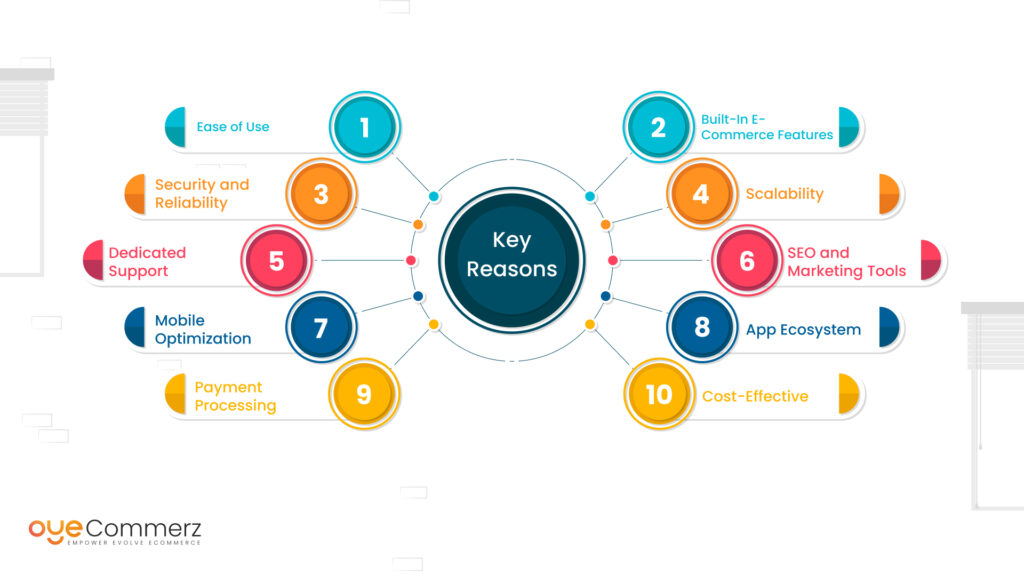Transitioning from WordPress to Shopify marks an exciting step in optimizing your online store operations. As businesses grow, choosing a platform that aligns with scalability, user experience, and customization becomes crucial. Shopify has emerged as a favorite for online merchants, offering unmatched flexibility, security, and ease of use. In this guide, we’ll explore why this migration is a game-changer, discuss the benefits, and provide actionable steps to ensure a seamless transition.
1. Top Reasons to Transition from WP to Shopify
WordPress, paired with WooCommerce, has served countless e-commerce platforms. Nevertheless, as businesses scale, issues like plugin dependency, data risks, and technical complexities often obstruct progress. Shopify, specifically created for e-commerce, addresses these concerns with an all-in-one, intuitive solution. Real data back this shift—Shopify hosts over 4.4 million stores globally, with a reported 10% boost to sales conversion rates for numerous merchants post-switch.
2. Key Benefits of Shopify for E-commerce Success
Shopify’s powerful platform is tailored for scaling businesses. Its notable benefits include:
- Effortless Design Flexibility: Shopify offers over 80 professionally designed themes.
- Built-in Features: Capabilities such as Shopify Payments and built-in SEO streamline operations.
- International Expansion: Multi-currency support and localization features enable brands to expand internationally.
Additionally, Shopify boasts an availability percentage of 99.98%, ensuring your store is always operational.
3. Preparing for WP to Shopify Migration
Prior to starting the migration process, evaluate your current store. Analyze product data, customer details, and SEO performance. Resources such as Shopify’s Migration Kit or third-party solutions can simplify this process. Develop a comprehensive plan, ensuring all assets—product descriptions, images, and blog content—are optimized for transfer.
4. The Importance of Accurate Data Migration
Transferring your data forms the foundation for a smooth transition. When moving from WordPress to Shopify, prioritize:
- Inventory Details: SKU, item summaries, and groupings.
- Customer Data: Emails, order history, and preferences.
- SEO Optimization: Retain meta tags, URLs, and forwarding paths to avoid SEO losses.
Use tools such as LitExtension to streamline data transfer while minimizing errors.
5. Tailoring Your Shopify Store to Fit Your Brand
After the move, personalizing your Shopify store helps it reflects your business identity. Take advantage of Shopify’s intuitive page builder to create layouts with ease. Shopify's templates are mobile-responsive, ensuring a smooth user experience across devices—a critical factor, given 74% of e-commerce traffic comes from mobile users.
6. Maintaining SEO During Migration
SEO is vital for preserving your online presence during migration. Shopify excels in SEO with clean URL structures, built-in optimization tools, and seamless blog integration. Ensure:
- Implement 301 redirects for old URLs.
- Optimize new pages with keyword-rich content.
- Use Shopify's apps Plug in SEO to track analytics after the switch.
7. Essential Tests After Migrating to Shopify
Once the migration is complete, conduct thorough testing.
Review: - Website speed (Shopify boasts faster speeds compared to WP).
- Payment integration reliability and transaction flow.
- Migrating eCommerce platforms Adaptability across devices.
Testing ensures your store provides a smooth shopping journey from the start.
8. Case Study of a Successful Migration
An example of effective platform switching is Gymshark, a sportswear company that transitioned to Shopify. After the switch, the company experienced a 60% increase in mobile sales and significantly lowered site downtime. This highlights the potential of Shopify in driving e-commerce growth.
9. Overcoming Common Migration Issues
Migration comes with challenges, such as information accuracy and reconfiguring custom functionalities. However, Shopify’s robust support and external professionals simplify the process. Collaborating with qualified Shopify developers ensures a smooth transition.
10. Making the Switch: The First Step Toward Success
Switching from WordPress to Shopify marks a strategic approach to e-commerce. By focusing on growth, simplifying management, and improving buyer satisfaction, Shopify enables companies to thrive in competitive markets.
Final Thoughts
Switching from WordPress to Shopify offers a smart solution that can greatly enhance your e-commerce success. With a well-structured strategy, the appropriate resources, and professional guidance, you Shopify migration pricing can unlock new growth opportunities.
Ready to make the leap? Let’s discuss how our Shopify migration services can revolutionize your online store. Contact us now, or consider: Can your business afford to miss out on Shopify’s growth potential?
